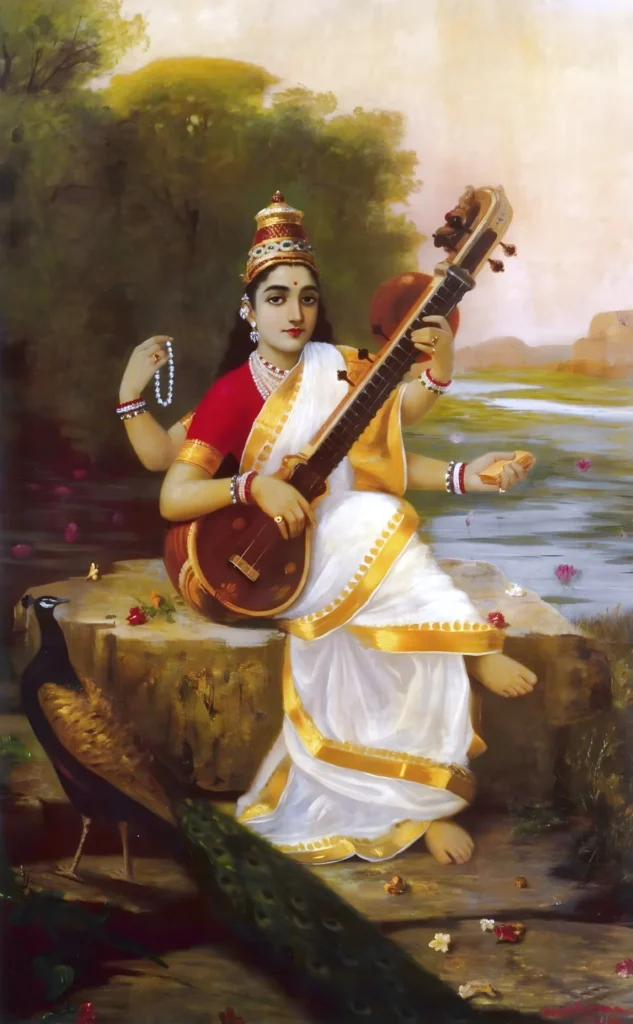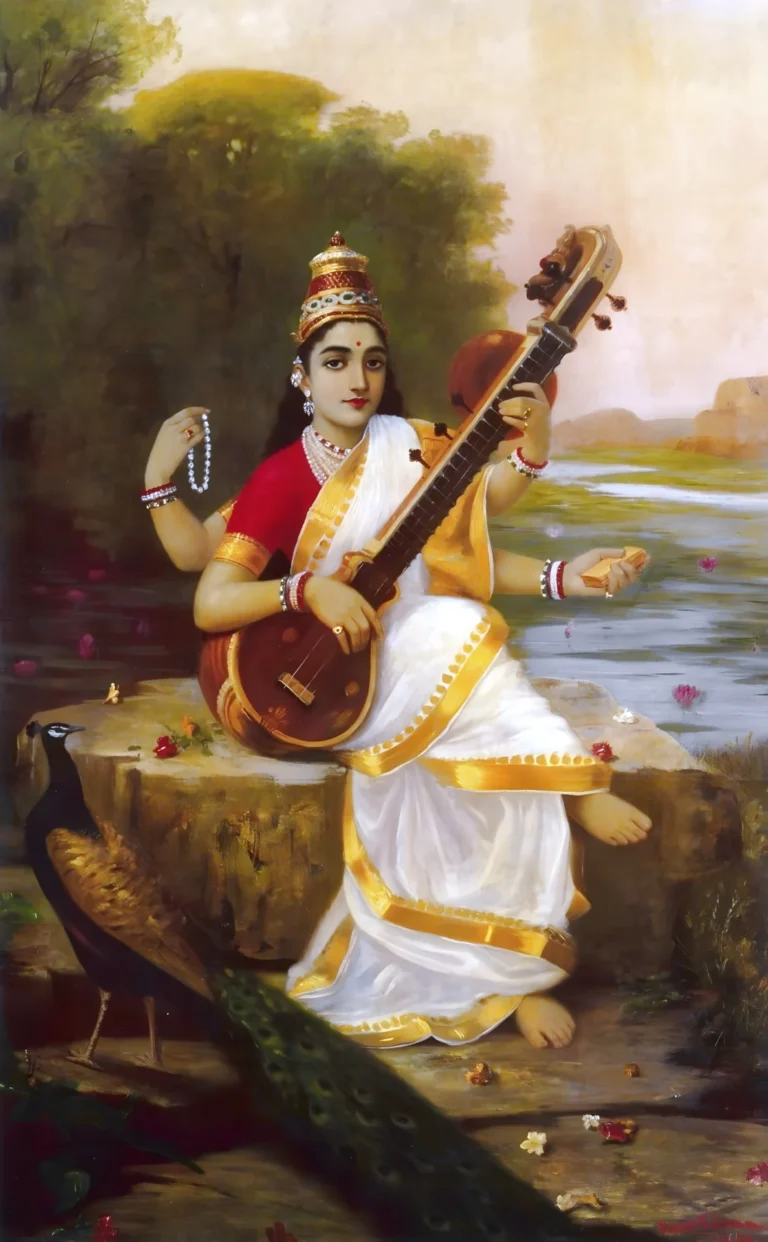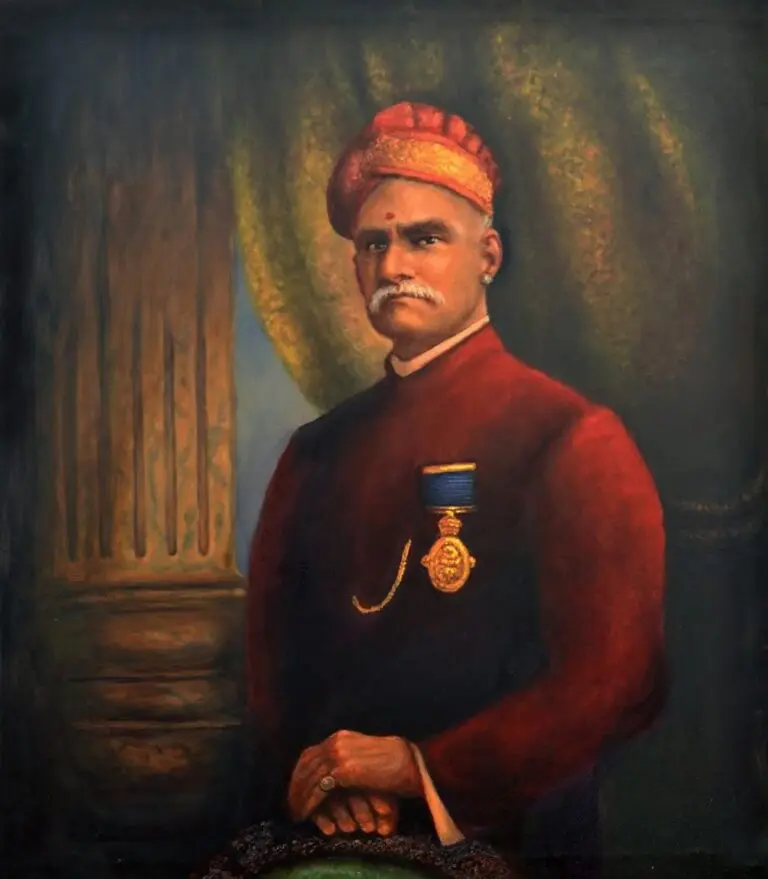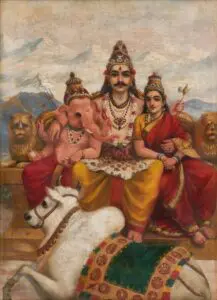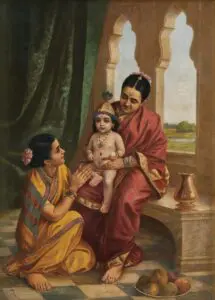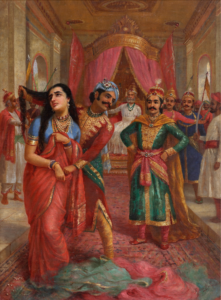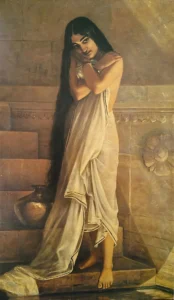Saraswati, Goddess of Wisdom
Saraswati, Goddess of Wisdom is one of Raja Ravi Varma’s most iconic representations, capturing the Hindu goddess of learning, art, and knowledge in a serene and dignified form. Saraswati is depicted with her traditional symbols – the veena, book, and mala – representing art, wisdom, and spirituality, respectively. With a calm expression and divine poise, Saraswati radiates an aura of tranquility and grace, embodying the ideals of wisdom and artistic inspiration. Varma’s delicate brushwork and realistic style bring her to life, making her accessible yet divine.
Late 19th Century
About the Artwork
Raja Ravi Varma's painting of Goddess Saraswati is a significant work that captures the essence of this revered Hindu deity, known as the goddess of knowledge, music, art, and wisdom. In this painting, Saraswati is depicted sitting gracefully on a log by a river, playing the sitar. She is adorned in a red bodice beneath a flowing white and gold sari, embodying elegance and serenity. A peacock is seen at her feet, symbolizing beauty and grace, while she is deeply engrossed in her music.
Iconography and Symbolism
The portrayal of Saraswati follows traditional iconographic descriptions found in ancient texts. She is typically shown with four arms:- Pustaka (Book): Represents knowledge.
- Aksha-mala (Beads): Signifies meditation and spiritual wisdom.
- Veena: Symbolizes artistic expression and creativity. Additionally, she is often depicted near a river, reinforcing her connection to learning and purity.
Did You Know
Did you know that Raja Ravi Varma’s Saraswati became so popular that her depiction was widely reproduced, making Saraswati’s image a common fixture in homes and temples across India?
The painting’s realistic style was revolutionary at the time, as Varma introduced Western techniques to Indian art, bringing mythological figures to life in a way people hadn’t seen before!
Raja Ravi Varma’s Saraswati was among the first to use lithographic prints, allowing everyday Indians to afford prints of Hindu deities. This innovation helped bring art and spirituality into people’s daily lives, making it a beloved masterpiece!




